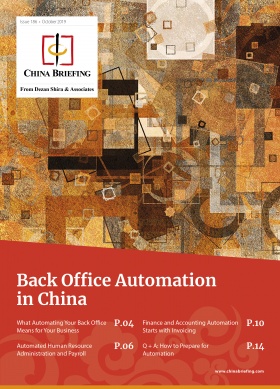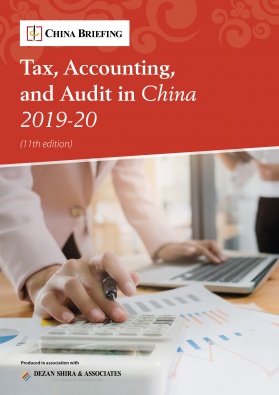China’s Fourth Plenum: Implications for Economic Reform
Op-ed by Alexander Chipman Koty
- Despite an unprecedented gap between consecutive plenums, China’s Fourth Plenum last week produced little to interest economic reform watchers, settling instead for managing the status quo.
- It appears that concrete reforms may have to wait until a resolution is reached in trade talks with the US, and will be a key source of leverage for Beijing.
- Investors should, however, not anticipate any dramatic policy reversals as the Fourth Plenum did not propose anything that would contradict recent market openings and other reforms.
China’s top leaders recently convened for the Fourth Plenum meetings in Beijing, where they discussed the most pressing issues facing the ruling Communist Party.
Plenums are the party’s most important internal meetings outside of the party congresses held once every five years. While always an important event, the Fourth Plenum was subject to extra scrutiny because of the 20-month gap since the Third Plenum – the longest time lapse between successive plenums in 40 years.
The extended delay led to a flurry of speculation, as many observers surmised that the party leadership was split on how to handle challenges like the US-China trade war, unrest in Hong Kong, and the country’s slowing economy.
Despite the speculation, the Fourth Plenum ultimately produced little in the way of new developments. In fact, even foreign investors who were hoping for the announcement of modest economic reforms were disappointed about the lack of attention publicly given to the economy.
A closer look at the situation surrounding the Fourth Plenum, however, may explain why so little was produced and why economic reforms may still eventually come to fruition.
What is a plenum?
A plenum, or plenary session, is a meeting of the Communist Party’s Central Committee that occurs between party congresses. The Central Committee, which has about 370 full and alternate members, is formally China’s highest executive body, but in practice takes orders from the more exclusive Politburo. The meetings themselves are highly secretive, with attendees normally restricted to the premises of the Jingxi Hotel in Beijing for the duration of the plenum.
Plenums are numbered for each one held after a party congress, which occurs every five years. In this case, it is the fourth plenum held since the 19th Party Congress in late 2017. There are usually about seven plenums in between the party congresses that occur every five years, though there is no fixed number. According to convention, the Party will hold a plenum at least once per year.
While a range of issues are discussed at these plenums, the focus of each one depends on which number plenum it is, the time of year it is held, and important external events that might occur. Some, for example, focus on economic reforms, while others are limited to internal party and government affairs.
Historically, many important reforms have emerged from plenums, including, most famously, the beginning of the reform and opening up policy at the Third Plenum in 1978. More recently, China announced an ambitious suite of market-based reforms at the Third Plenum in 2013, though many of these still have not taken form. Last year, China abolished term limits on the presidency following the Second Plenum in 2018 and dramatically restructured government departments at the Third Plenum just over a month later, fundamentally changing the structure of Chinese politics.
What happened at the Fourth Plenum?
The huge gap between plenums led to speculation about what the Fourth Plenum would entail. Rumors swirled that the Fourth Plenum was delayed due to splits among the ruling elite on how to tackle relations with the US, demonstrations in Hong Kong, and a decelerating economy, and that personnel changes could be made to the Politburo Standing Committee, the country’s most powerful political body.
Despite the many pressing issues facing China’s leadership, the Fourth Plenum was mostly devoted to internal party affairs, catching many observers off guard. Within this area, the meeting did not appear to produce anything new of significance, as the official communiqué mostly reiterated oft-stated tenets of Xi Jinping Thought on Socialism with Chinese Characteristics for a New Era.
For instance, the communiqué stressed the strengths of China’s system of centralized leadership and the need to further “modernize” governance. The communiqué reiterated plans put forward at the 19th Party Congress for China to have “basically modernized its state governance system and capacity” by 2035 and to fully modernize by 2049, the 100th anniversary of the People’s Republic.
Modernizing governance is code for President Xi’s campaign to reform the party and state institutions to re-establish centralized authority, make cadres more efficient, motivated, and corruption-free, and introduce technology like the Xuexi app and the social credit system to monitor officials.
The Fourth Plenum did, however, seem to produce new policies regarding the unrest in Hong Kong. Statements made after the plenum referred to the need to establish new legal mechanisms, national security policies, and patriotic education in Hong Kong.
What did it say about economic reforms?
Although not a feature of every plenum, some observers were hoping for announcements of new economic reforms. This is because the Third Plenum is usually devoted to economic affairs, but the last one was instead focused on legislative issues relating to the Two Sessions. Accordingly, some thought the Fourth Plenum would feature the economic content typically found at the Third Plenum.
In the end, this was not the case. All the communiqué produced relating to the economy were broad statements about growing pressures and the need to deepen reform.
Still, the communiqué stated that China will allow “the market to fully exercise its decisive role in allocating resources”, which may reassure investors who feared that market-based reforms would be abandoned.
Simultaneously, however, the communiqué stressed “the dominant role of the public sector and common development of entities under diverse forms of ownership”, suggesting that the government will continue to protect or increase the role of state-owned entities (SOEs) and intervention in the economy.
If anything, the communiqué is an endorsement of Xi’s policies that allow market entities a role in the economy while upholding the dominant status of the state.
One reason that economic policies were only briefly mentioned in the communiqué could be that there was disagreement on the direction for further reforms, since the communiqué only represents a fully agreed upon consensus. There is little evidence to back this suggestion, however, as the communiqué looks more like an affirmation of the status quo.
When can we expect economic reforms?
It is likely that China is holding off on introducing new economic reforms until a trade deal is reached with the US.
Many of the demands of US trade negotiators involve China reducing the role of government in the economy and introducing more market-based policies. Therefore, even if China’s leadership would like to adopt market-based reforms, it makes more sense for them to wait and use these as leverage in a potential trade deal.
If a trade deal does not come to pass, the Two Sessions meetings in early March 2020 marks another likely time for reforms to be announced. In recent years, China’s leadership has also used international events like the Boao Forum to announce economic reforms favorable to foreign investors.
In any event, the Fourth Plenum’s delay and the lack of new policies it produced should not be seen as evidence of a change of policy direction. Rather, the Fourth Plenum is further evidence of the Communist Party leadership’s commitment to the status quo and that any reforms will be introduced on its own terms.
About Us
China Briefing is produced by Dezan Shira & Associates. The firm assists foreign investors throughout Asia from offices across the world, including in Dalian, Beijing, Shanghai, Guangzhou, Shenzhen, and Hong Kong. Readers may write to china@dezshira.com for more support on doing business in China.
- Previous Article How to Read China’s New Law on Foreign Investment
- Next Article New Curfew Rules, Real-Name Registration for China’s Young Online Gamers








